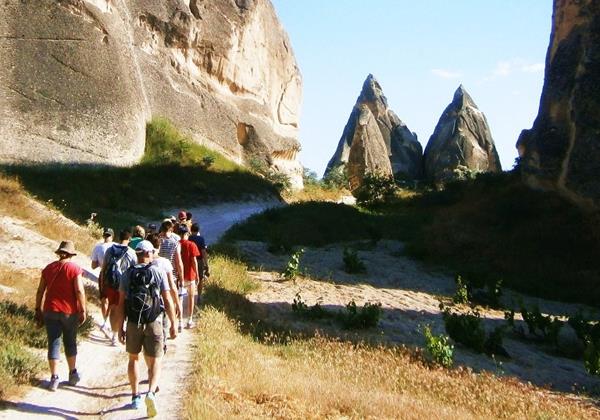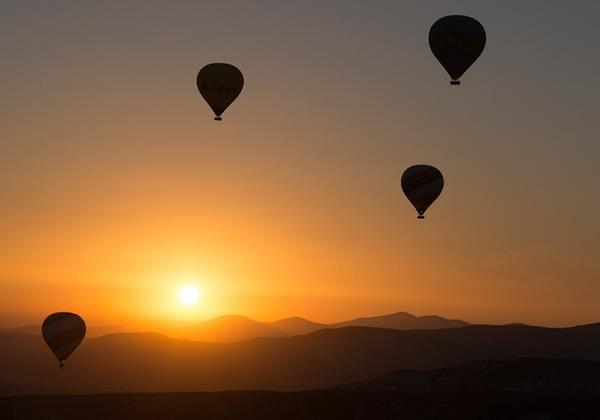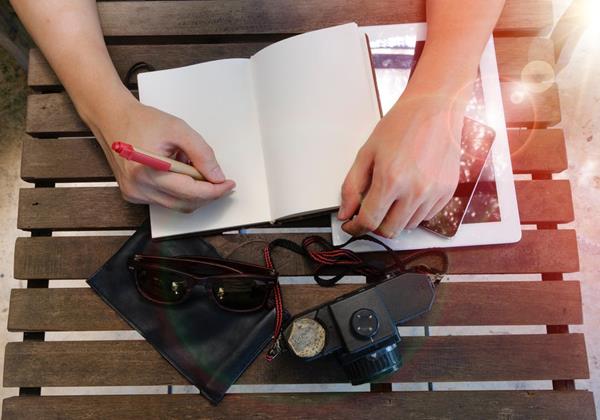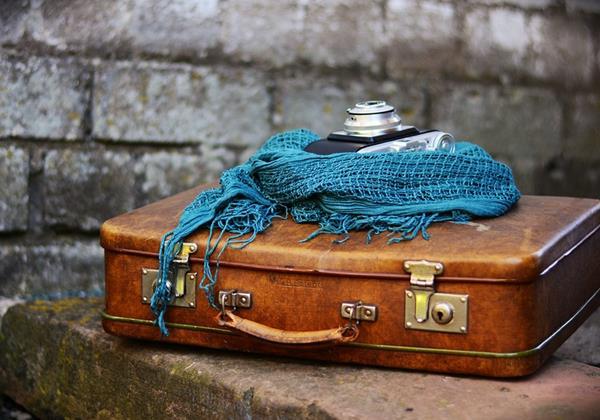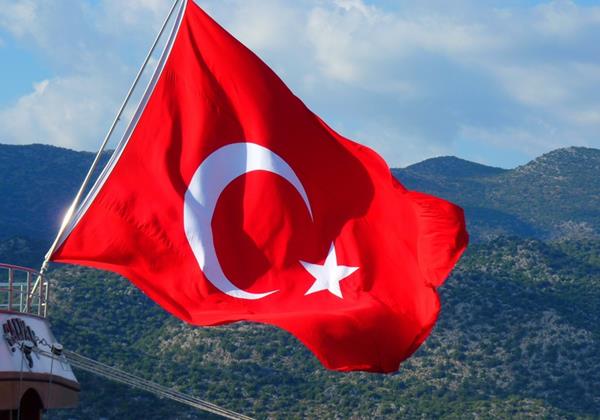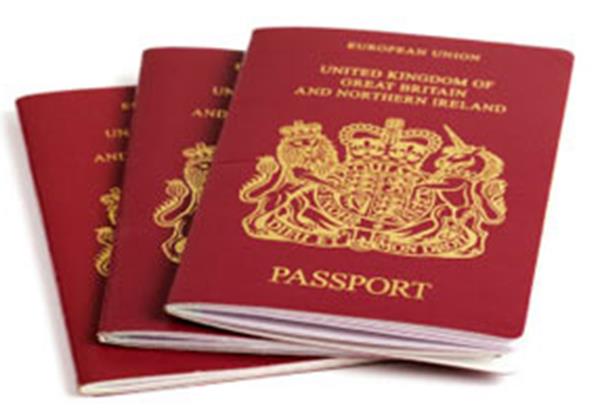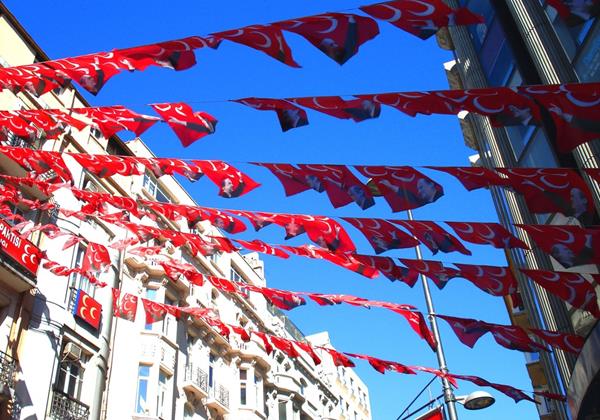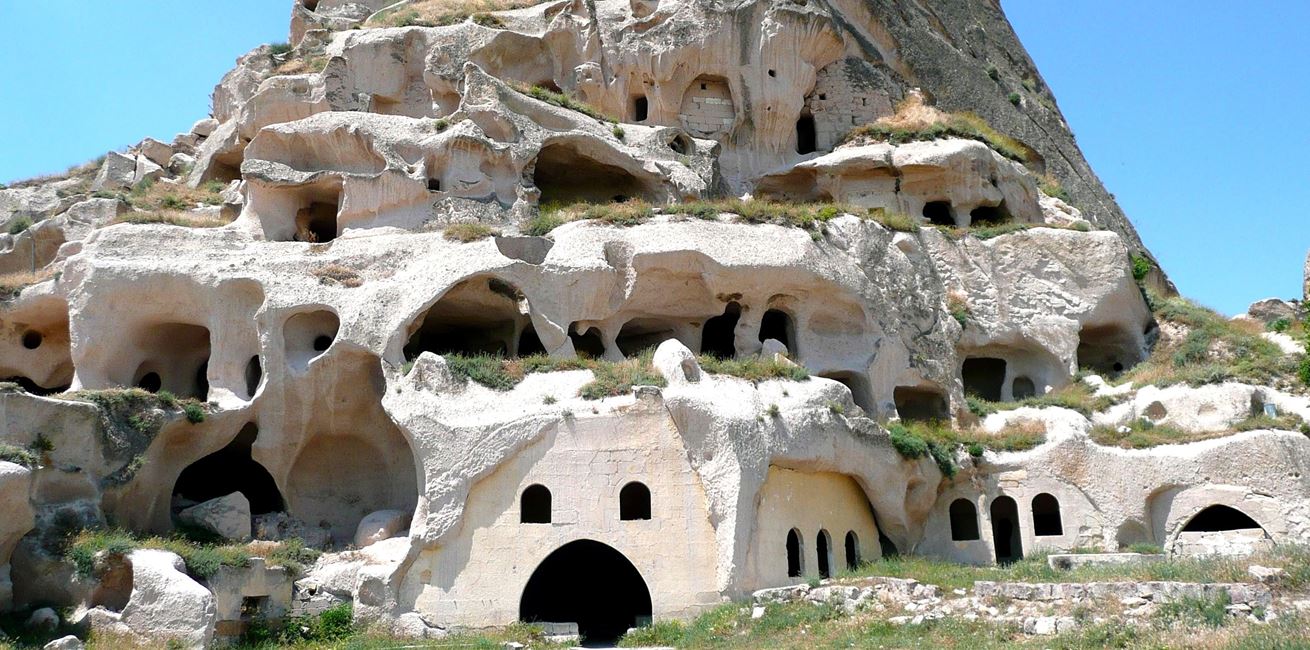
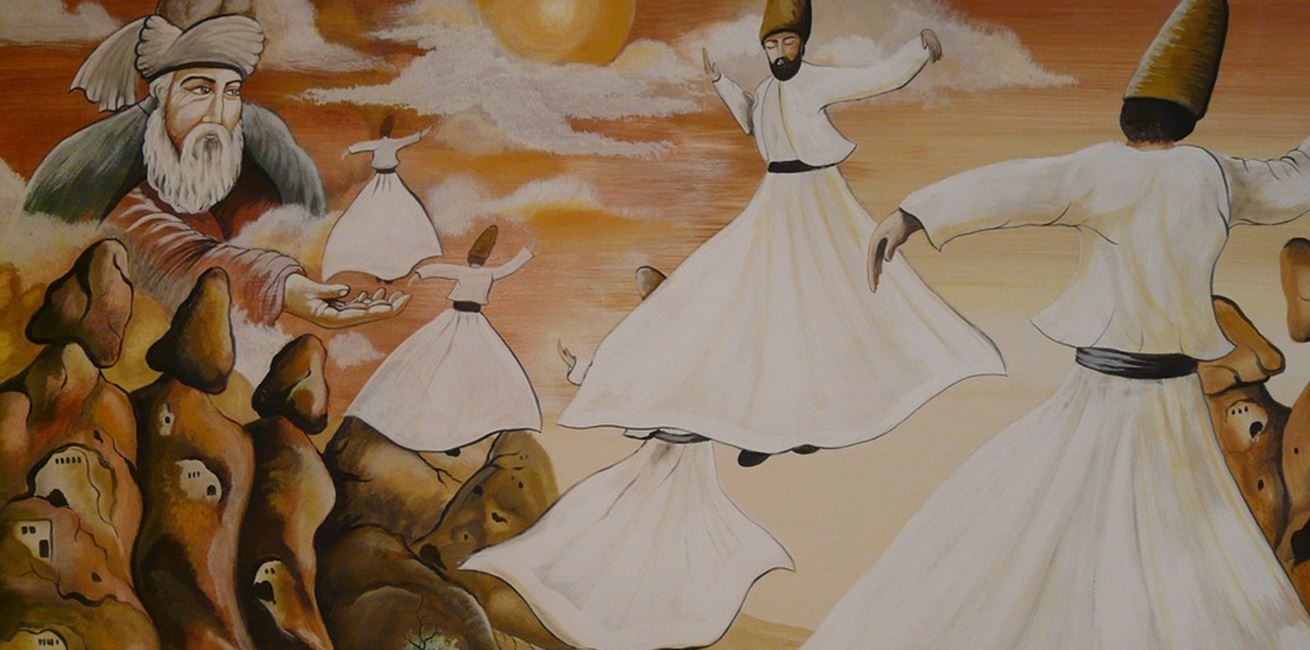
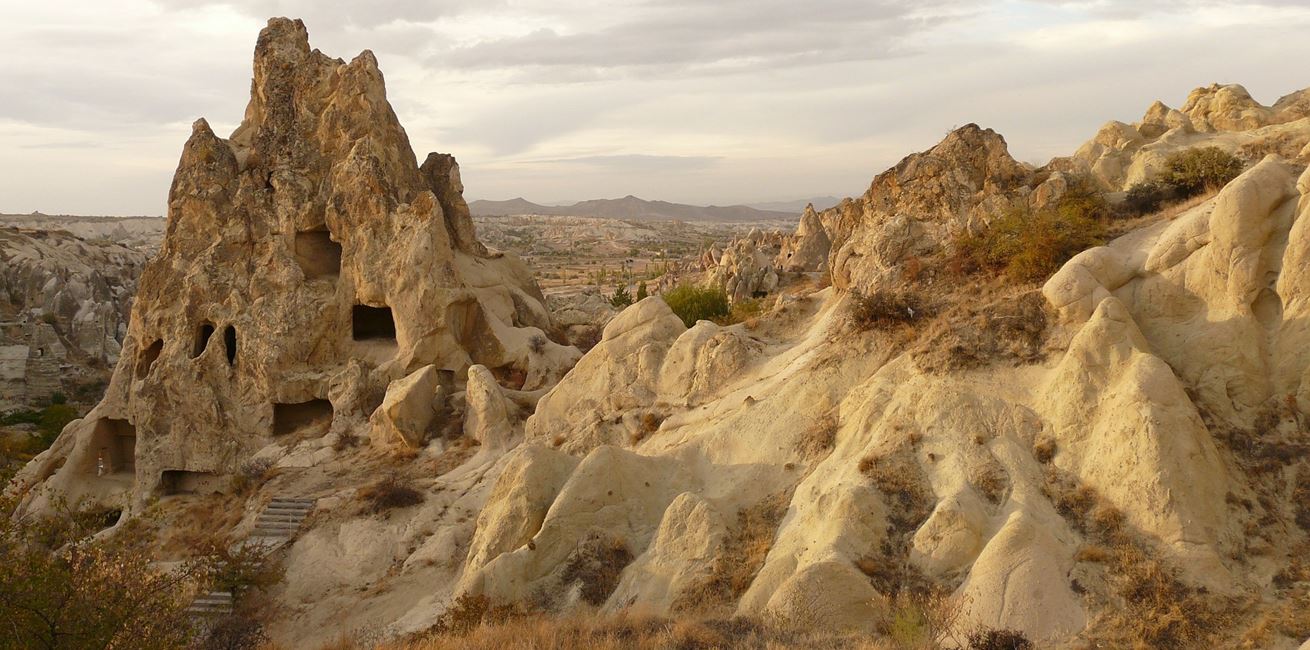
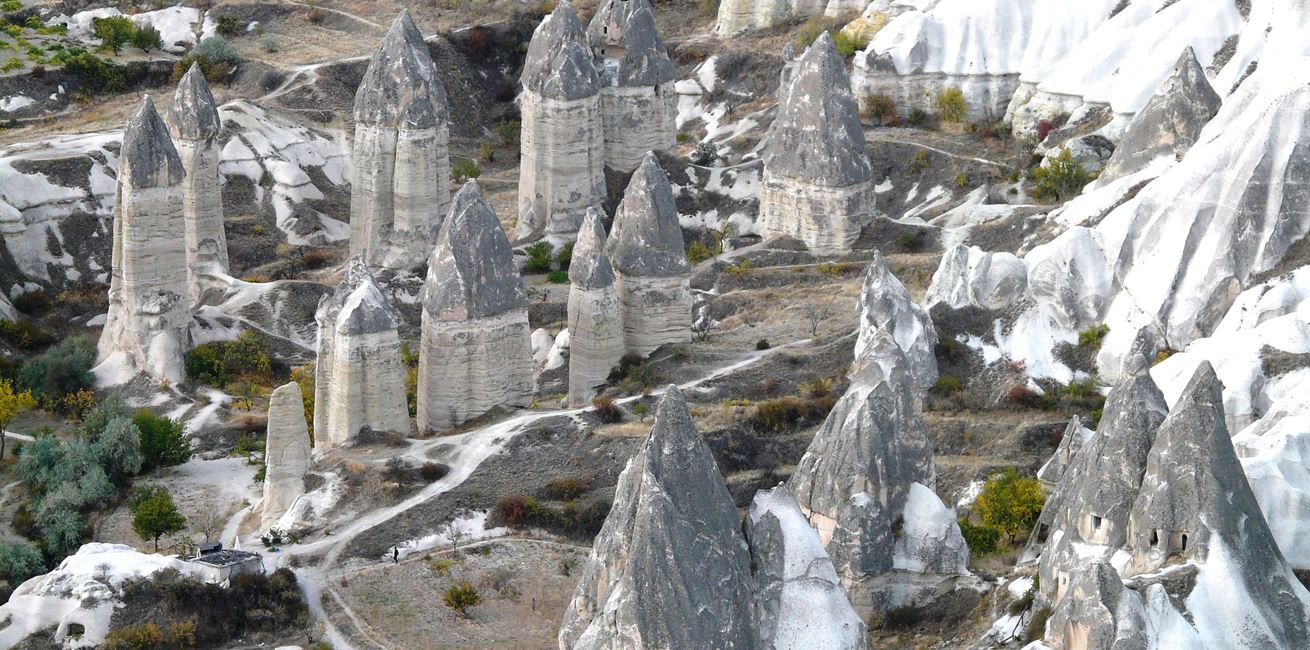
Cappadocia
Discover this unique area of central Turkey shaped by nature and history.
|
|||||||||||||||||||||||||||||
Cappadocia is famous for some of the most beautiful natural rock formations which have shaped the impressive landscape and topography of the Göreme valley. Ancient volcanic eruptions blanketed the region with thick ash. This solidified and was later eroded over years of exposure to the elements, resulting in a fairy tale landscape of cones, pillars, pinnacles, mushrooms, and chimneys, which stretch as far as 40 meters into the sky.
Göreme was inhabited as early as 1800 to 1200 B.C and the inhabitants later found themselves situated between two rival empires; the Persians and the Greeks (amongst many later rivals). To seek refuge from their precarious political position, residents decided to take measures against sudden attacks and thus began carving chambers and tunnel complexes into the soft rock to create entire towns with as many as eight different stories hidden underground.
In the 4th -7th century Cappadocia also
became a refuge for many early Christians fleeing persecution from
Rome. The monks excavated extensive monasteries, living
quarters and created Byzantine paintings of medieval saints in
the chapels carved into the rock. The paintings are well-preserved
and a remarkable sight for visitors to the
museums.
The area still retains much of the mystique that makes it so enchanting. To this day many of the soaring pinnacles are still inhabited and many of the rock-cut storerooms are still stuffed with grapes, lemons, potatoes and flat bread waiting for the winter. Cappadocia is settled on a high, dry plateau in the middle of Turkey.
The town of Göreme is the main visitor center for visitors to the park, though Nevsehir, Avanos, and Urgüp also have tourist facilities. These towns can be reached via bus from Kayseri airport. Long-distance buses also run from Istanbul and Ankara to the Cappadocia region.
| Göreme Open-Air Museum |
The Göreme Open Air Museum is a UNESCO World Heritage Site and houses some of the finest rock cut churches. Entrance is approx 15 TL per person.
The churches are beautifully painted from inside with murals dating from 900-1200 AD. We advise visiting in the early morning to avoid the heat, it can get quite crowded during August restricting the time allowed in individual churches to five minutes
There is an extra admission fee to access the magnificent Karanlık Kilise (Dark Church) but some of the best examples of beautifully preserved Byzantine art can be seen here including scenes from the New Testament.
| Underground Cities: Derinkuyu, Kaymakli |
Cappadocia is known for its many subterranean settlements, or 'underground cities'. There are 36 in total, believed to have housed up to 10,000 people. Derinkuyu is the deepest (around 8 stories) and extends 60m deep into the volcanic rock. Kaymakli is the broadest and we recommend Kaymakli Underground City (UNESCO) to get a general sense of their construction and use.
Carved out of soft tufa rock, for centuries residents sought shelter underground using secret tunnels from their homes into the subterranean cities. The sleeping quarters were located in the lower levels and the kitchens/ wineries at the upper level. Long passages, narrow steps, and a labyrinth-like tunnel system connected the rooms. The caves are actually quite roomy most of the time and you can stand easily in the main rooms. The stairwells and tunnels between rooms can be a little tighter and would require you to bend and crouch, so be prepared.







